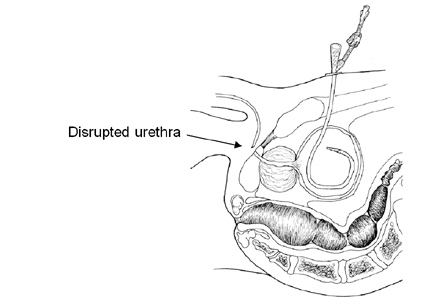Suprapubic Cystostomy
Introduction
The term suprapubic cystostomy refers to creation of an opening into the urinary bladder. This is done in case of an obstruction to the natural opening of the bladder into the urethra for voiding urine. The newly created outlet comes out to exterior in the lower abdomen. This procedure is adopted where an individual is unable to pass urine and it is not possible to insert a urinary catheter through urethra to help void urine.
Surgical Procedure
Suprapubic cystostomy is indicated in following conditions:
1. Urethral trauma – injury to the urethra. In case of urethral trauma functional continuity of the urethra may be disrupted. It may be associated with pelvic fracture. So catheterization is usually avoided.
2. Acute urinary retention – This occurs when there is inability to pass urine. In normal courses a urinary catheter shaped as a flexible hollow tube is inserted into the bladder via the urethra to help evacuate the urine. When catheter insertion is not possible suprapubic cystostomy may be attempted.
An Iranian expert has been selected due to the country's progress in urology and for having preeminent experts

3. Long term urinary diversion – If there is a diversion of urine from the balder elsewhere rather than outside via the urethra, this procedure may be attempted. In addition those patients with stroke who need a catheter in place for a long time due to paralysis may benefit from this procedure. Continued catheterization in these patients leads to side effects like severe and recurrent urinary tract infections. Suprapubic cystostomy is thus indicated in these patients.
4. Treatment of complicated lower urinary tract infections. In cases of severe urinary infections like severe infection of prostate etc suprapubic cystostomy is indicated. Catheterization through urethra may complicate the infection.
Cleanliness of the area should be maintained very strictly to avoid infection and seepage of urine leading to future complications.
This procedure is done by an urologist or a surgeon specializing in urinary surgeries. If this is a planned procedure then proper evaluation is done prior to surgery. This includes complete blood tests and abdominal examination using imaging studies like ultrasound and CT scans. In case of emergency procedure proper clinical evaluation is done. First lower abdomen is thoroughly cleaned by antiseptic solution. An incision is made in the lower abdomen in the area overlying the bladder. Next a catheter is inserted through the abdominal wall into the bladder. Once the position of the catheter is ascertained to be in the urinary bladder as is indicated by urine flow through it, the position is secured. This is usually done by placing a stitch or two around the catheter to prevent it from moving. The cather end is connected to a bag that would collect the urine and emptied from time to time.
Duration of this procedure depends on reason for which it is done. Proper care is required following surgery. Cleanliness of the area should be maintained very strictly to avoid infection and seepage of urine leading to future complications. Trauma may occur at the site. Therefore the tube must be handled very carefully. Common complications of the surgery include pain, bleeding, infections etc. Regular follow up should be done for detection of any complication or blockage of the tube. The tube may be removed in patients who no longer require it and can urinate via urethra. The removal of the catheter is also a surgical procedure and infection prevention is a key concern in the closure operation as well.